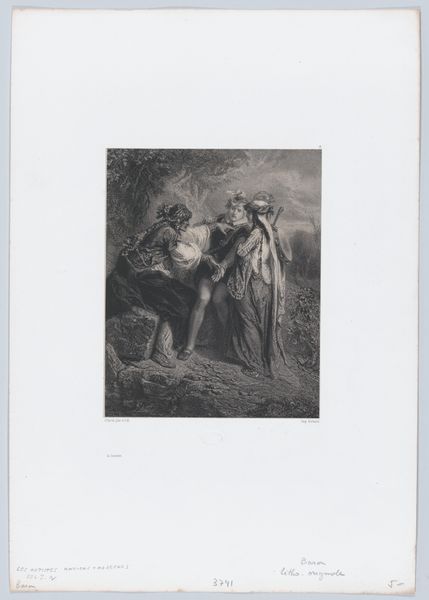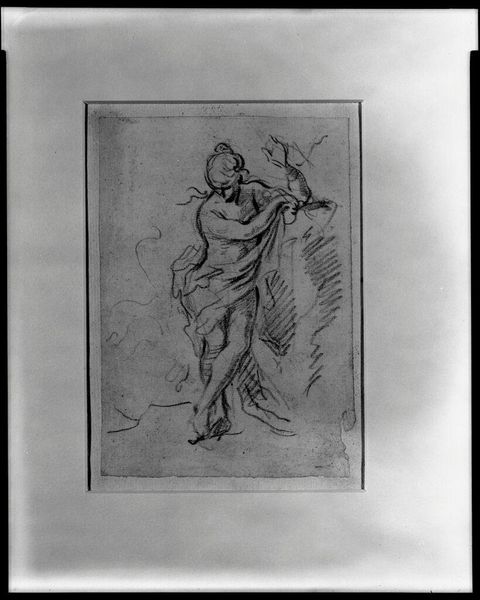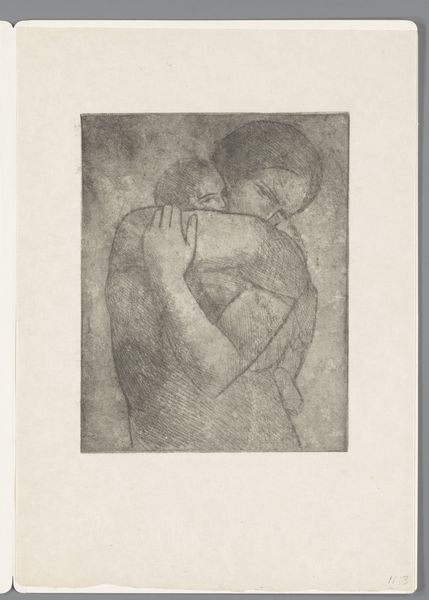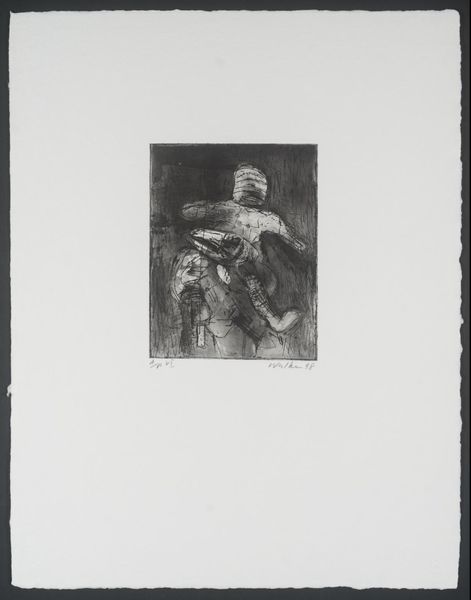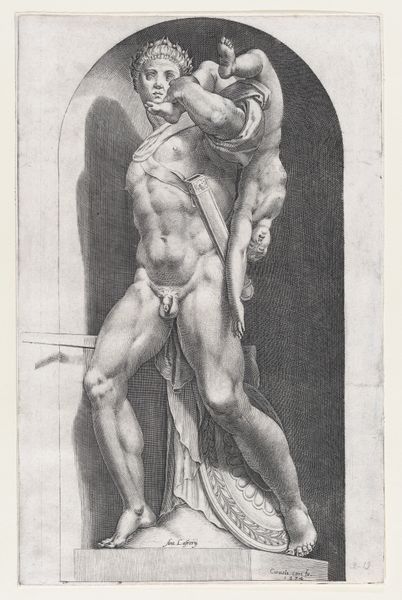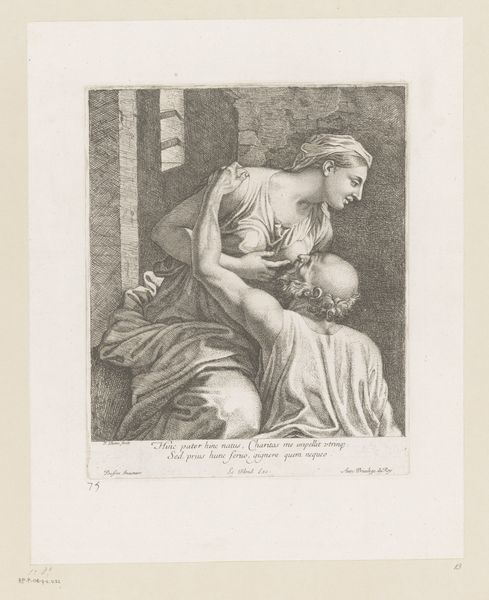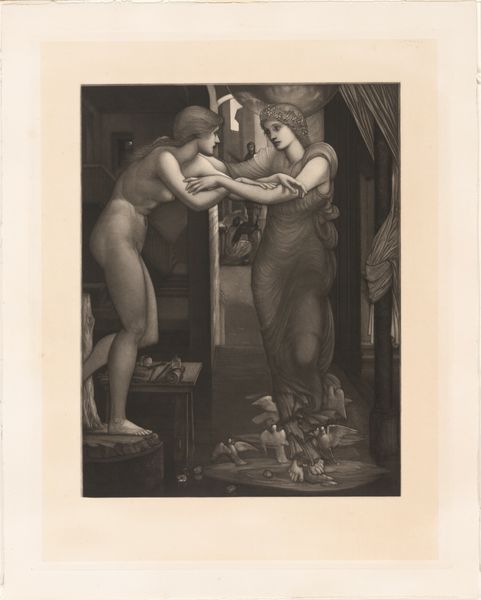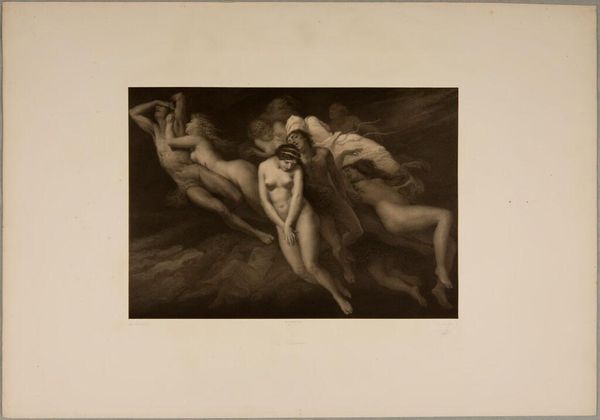
print, woodcut, wood-engraving
#
narrative-art
# print
#
figuration
#
woodcut
#
front and centered composition
#
united-states
#
history-painting
#
academic-art
#
wood-engraving
#
realism
Dimensions: 7 3/4 x 3 1/4 in. (19.69 x 8.26 cm) (image)12 x 9 1/2 in. (30.48 x 24.13 cm) (sheet)
Copyright: No Copyright - United States
Editor: So, here we have Timothy Cole’s "Expulsion from Paradise," created in 1889 using wood engraving. It’s incredibly detailed for a print! The figures of Adam and Eve convey a real sense of shame and sorrow. What strikes you when you look at this piece? Curator: I’m immediately struck by the public role such imagery played at the time. Think about it: in 1889, religious narratives were powerfully embedded within the social fabric of American life. Cole’s print, a reproduction of a painting likely viewed by elite audiences, democratizes the image for wider consumption. Editor: Democratizes... that's interesting. How so? Curator: Printmaking made art more accessible to the middle class. Consider the context: mass media was on the rise. Reproductions in magazines and books shaped public understanding and taste. Cole's technical skill served to disseminate a particular *interpretation* of the biblical narrative. Editor: So, it’s not just the story itself, but how it's presented and who gets to see it? The dramatic expressions, for example? Curator: Precisely! The academic art style, with its emphasis on realism, amplified the emotional impact. This wasn't just a depiction of a biblical scene; it was a moral lesson presented to the masses. The politics of imagery, even then, played a huge role in shaping beliefs. And think about how the institution exhibiting the print today also influences this narrative! Editor: Wow, I hadn't thought about the social and political factors involved in something that seems so… religious and personal. Thanks for broadening my perspective. Curator: It’s crucial to analyze art beyond its surface appeal and recognize its cultural implications, how museums display works, and why we still reflect on it today. It shows us just how powerful and complex art is, right?
Comments
No comments
Be the first to comment and join the conversation on the ultimate creative platform.
